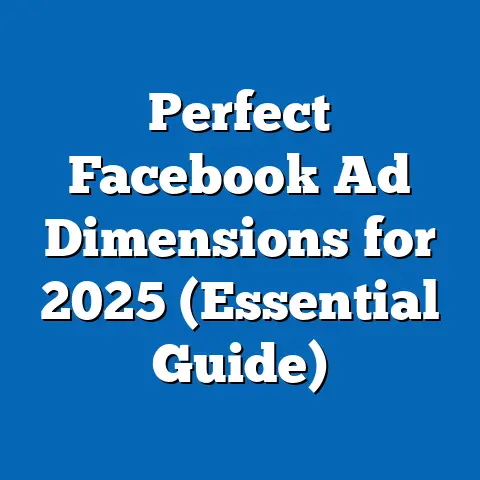Download Facebook Lite Now (Unlock Seamless Connectivity)
In an era where digital connectivity is a cornerstone of daily life, ensuring access to social media platforms in an efficient and sustainable way has become increasingly important. Facebook Lite, a lightweight version of the popular social networking app, offers a solution for users in low-bandwidth areas or those with limited device capabilities, while also aligning with broader sustainability goals. This article explores the significance of downloading Facebook Lite, delving into its role in promoting digital inclusion, its sustainability benefits, and the data-driven trends shaping its adoption worldwide.
We will analyze key statistics on internet access and mobile usage, demographic patterns of Facebook Lite users, and the app’s environmental impact compared to its full version. By presenting historical trends, current data, and future implications, this comprehensive piece aims to shed light on why downloading Facebook Lite now is a step toward seamless connectivity and a more sustainable digital future.
The Digital Divide and the Need for Lightweight Solutions
The digital divide remains a significant global challenge, with billions of people still lacking reliable internet access. According to the International Telecommunication Union (ITU), as of 2022, approximately 2.7 billion people—roughly 33% of the global population—remain offline, with the majority residing in developing regions. This gap is often exacerbated by limited access to high-speed internet and affordable, modern devices.
Facebook Lite, launched in 2015, was designed to address these challenges by offering a stripped-down version of the main app that consumes less data and works efficiently on low-end devices and slow networks. The app requires only 1 MB of storage space compared to the 70+ MB of the standard Facebook app, making it accessible to users with older or budget smartphones. This design not only promotes digital inclusion but also reduces the energy demands associated with data-heavy applications, contributing to sustainability.
The need for such solutions is underscored by the fact that mobile data usage continues to skyrocket. Statista reports that global mobile data traffic reached 77.5 exabytes per month in 2022, a figure projected to grow to 220 exabytes by 2028. Lightweight apps like Facebook Lite help mitigate the strain on network infrastructure and reduce the carbon footprint associated with excessive data consumption.
Sustainability in the Digital Age: Why It Matters
Sustainability in technology is no longer a niche concern but a critical component of global efforts to combat climate change. The digital sector accounts for approximately 4% of global greenhouse gas emissions, a figure expected to double by 2025 if unchecked, according to a 2021 report by the Shift Project. Mobile apps, cloud services, and data centers are significant contributors to this environmental impact due to their energy-intensive operations.
Facebook Lite plays a role in reducing this footprint by minimizing data usage and device resource requirements. For instance, a study by the University of Cambridge found that lightweight apps can reduce energy consumption by up to 30% compared to their full-featured counterparts. By enabling users to stay connected without the need for frequent device upgrades or high-bandwidth networks, Facebook Lite indirectly lowers electronic waste and energy use.
Moreover, the app’s efficiency aligns with the United Nations’ Sustainable Development Goals (SDGs), particularly Goal 9 (Industry, Innovation, and Infrastructure) and Goal 13 (Climate Action). As more users adopt such technologies, the cumulative impact on global sustainability could be substantial, especially in regions with high mobile penetration but limited resources.
Key Statistics: Internet Access and Mobile Penetration
To understand the relevance of Facebook Lite, it’s essential to examine global internet and mobile usage trends. As of 2023, the global internet penetration rate stands at 67%, according to DataReportal, with 5.3 billion active internet users. However, this figure masks significant disparities—while North America boasts a 95% penetration rate, sub-Saharan Africa lags at just 39%.
Mobile devices are the primary means of internet access for many, especially in developing countries. The GSMA reports that 55% of the global population—around 4.4 billion people—used mobile internet in 2022, with 90% of these connections occurring in low- and middle-income countries. Yet, many of these users rely on 2G or 3G networks, which are ill-suited for data-heavy apps.
Facebook Lite’s target audience lies within this demographic, as the app is optimized for 2G networks and can function on devices with as little as 1 GB of RAM. This accessibility has driven its popularity, with over 1 billion downloads on the Google Play Store as of 2023, making it one of the most downloaded social media apps globally.
Demographic Patterns: Who Uses Facebook Lite?
The user base of Facebook Lite reflects the app’s focus on accessibility and inclusion. Data from Statista indicates that the app is most popular in regions with lower internet penetration and income levels, such as South Asia, Southeast Asia, and parts of Africa. For instance, India accounts for over 30% of Facebook Lite’s global user base, with approximately 300 million active users as of 2022.
Demographically, the app appeals to younger users and those in rural areas. A 2021 survey by Kantar revealed that 60% of Facebook Lite users are under the age of 30, and 70% reside in non-urban settings where high-speed internet is often unavailable. Gender-wise, the app sees a near-equal split, with 52% male and 48% female users, reflecting its broad appeal.
These patterns highlight the app’s role in bridging the digital divide, particularly for demographics that are often excluded from full digital participation due to economic or infrastructural barriers. By catering to these users, Facebook Lite not only expands Meta’s reach but also fosters social and economic connectivity in underserved communities.
Historical Trends: Evolution of Lightweight Apps
The concept of lightweight apps is not new, but their importance has grown alongside mobile internet adoption. When Facebook Lite was first introduced in 2015, it targeted users in emerging markets like India and the Philippines, where 2G networks were still prevalent. At the time, only 25% of the global population had access to 3G or better, per ITU data, underscoring the need for data-efficient solutions.
Comparatively, the standard Facebook app has seen slower growth in these regions due to its higher data and hardware demands. While the full app remains dominant in developed markets with 4G and 5G networks, Facebook Lite’s trajectory shows a clear demand for sustainable, accessible alternatives in the Global South.
Current Data: Adoption and Impact of Facebook Lite
As of 2023, Facebook Lite continues to see robust adoption, particularly in regions with growing mobile internet usage. Data from App Annie indicates that the app ranks among the top 10 social networking apps in over 50 countries, with an average daily active user count of 200 million. This represents roughly 10% of Facebook’s total 2.1 billion daily active users, per Meta’s Q2 2023 earnings report.
The app’s impact on data usage is significant. A 2022 study by Sandvine found that Facebook Lite users consume approximately 50% less data per session compared to users of the standard app. This reduction translates to lower energy consumption at both the user and data center levels, contributing to a smaller carbon footprint.
Furthermore, the app’s lightweight design reduces the need for frequent device upgrades. With e-waste generation reaching 57.4 million metric tons in 2021 (per the Global E-waste Monitor), solutions like Facebook Lite that extend the usability of older devices are crucial for sustainability.
Environmental Benefits: A Closer Look
The environmental benefits of Facebook Lite are worth exploring in detail. By reducing data usage, the app decreases the demand on data centers, which are major energy consumers. According to the International Energy Agency (IEA), data centers accounted for 1% of global electricity use in 2022, a figure that could rise to 3% by 2030 without efficiency improvements.
A hypothetical visualization of this impact could be a bar chart comparing the energy consumption of 100 million users on Facebook Lite versus the standard app over a year. Based on the University of Cambridge’s findings, Facebook Lite users might collectively save enough energy to power a small city for a month—an illustration of the app’s potential for large-scale environmental benefits.
Additionally, by supporting older devices, the app helps curb the production of new electronics, which often involves resource-intensive mining and manufacturing processes. This aligns with circular economy principles, reducing waste and promoting sustainable consumption.
Challenges and Criticisms of Facebook Lite
While Facebook Lite offers numerous benefits, it is not without challenges. Critics argue that the app provides a limited user experience, lacking features like high-definition video streaming and advanced privacy controls available in the standard version. A 2020 survey by Pew Research found that 35% of users in developing countries felt that lightweight apps, including Facebook Lite, did not fully meet their needs for content and functionality.
Privacy concerns also persist, as Meta has faced scrutiny over data collection practices across its platforms. Although Facebook Lite uses less data, it still collects user information, raising questions about security for users in regions with weaker data protection laws. Addressing these concerns will be critical for maintaining trust among its user base.
Lastly, while the app promotes sustainability, it is not a complete solution to the digital sector’s environmental impact. Broader systemic changes, such as renewable energy adoption in data centers, are necessary to achieve true sustainability.
Broader Implications and Future Trends
The rise of Facebook Lite reflects a growing recognition of the need for inclusive, sustainable technology solutions. As mobile internet penetration continues to grow—projected to reach 61% of the global population by 2025, per GSMA—the demand for lightweight apps will likely increase. This trend could spur innovation in other sectors, encouraging developers to prioritize efficiency and accessibility in app design.
From a sustainability perspective, the success of Facebook Lite underscores the potential for small-scale changes to have a significant environmental impact. If more companies adopt similar strategies, the digital sector could reduce its carbon footprint even as usage grows. Policymakers and tech leaders should take note, incentivizing the development of eco-friendly technologies through regulations and funding.
Demographically, the app’s focus on underserved populations highlights the importance of digital equity. Bridging the digital divide is not just a matter of access but also of ensuring that technology works for everyone, regardless of economic or geographic constraints. Facebook Lite is a step in this direction, but sustained efforts are needed to address systemic inequalities.
Conclusion: Why Download Facebook Lite Now?
Downloading Facebook Lite now offers a practical way to stay connected while supporting sustainability and digital inclusion. With over 1 billion downloads and a user base spanning diverse demographics, the app has proven its value in providing seamless connectivity for those with limited resources. Its data-efficient design reduces energy consumption and e-waste, aligning with global sustainability goals at a time when the digital sector’s environmental impact is under scrutiny.
As internet usage continues to grow, solutions like Facebook Lite will play a crucial role in ensuring that connectivity does not come at the expense of the planet. By choosing this app, users can contribute to a more inclusive and sustainable digital future—one where access is universal, and environmental responsibility is prioritized. The broader implications of this shift are clear: technology must evolve to meet the needs of all while safeguarding the world we live in.






